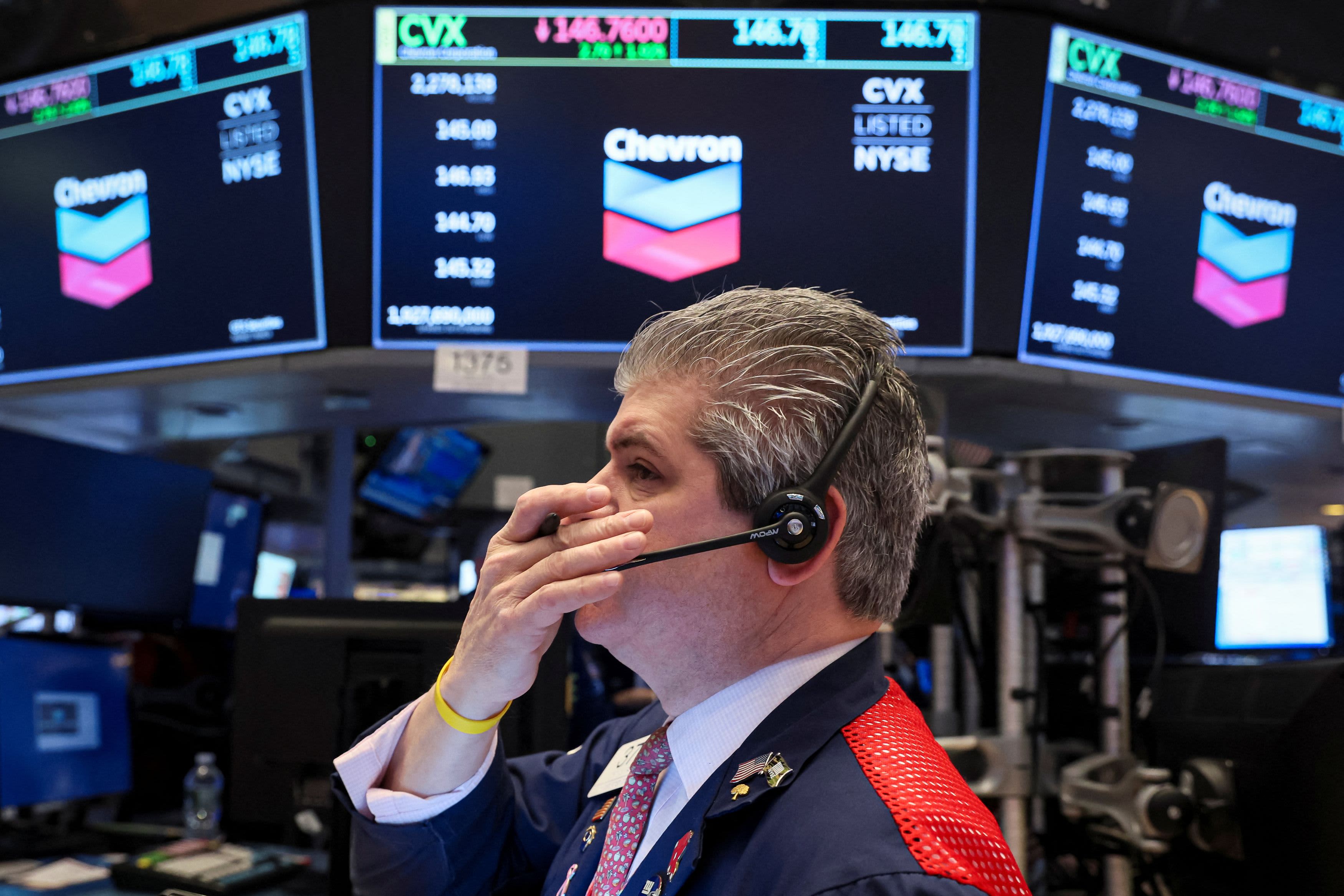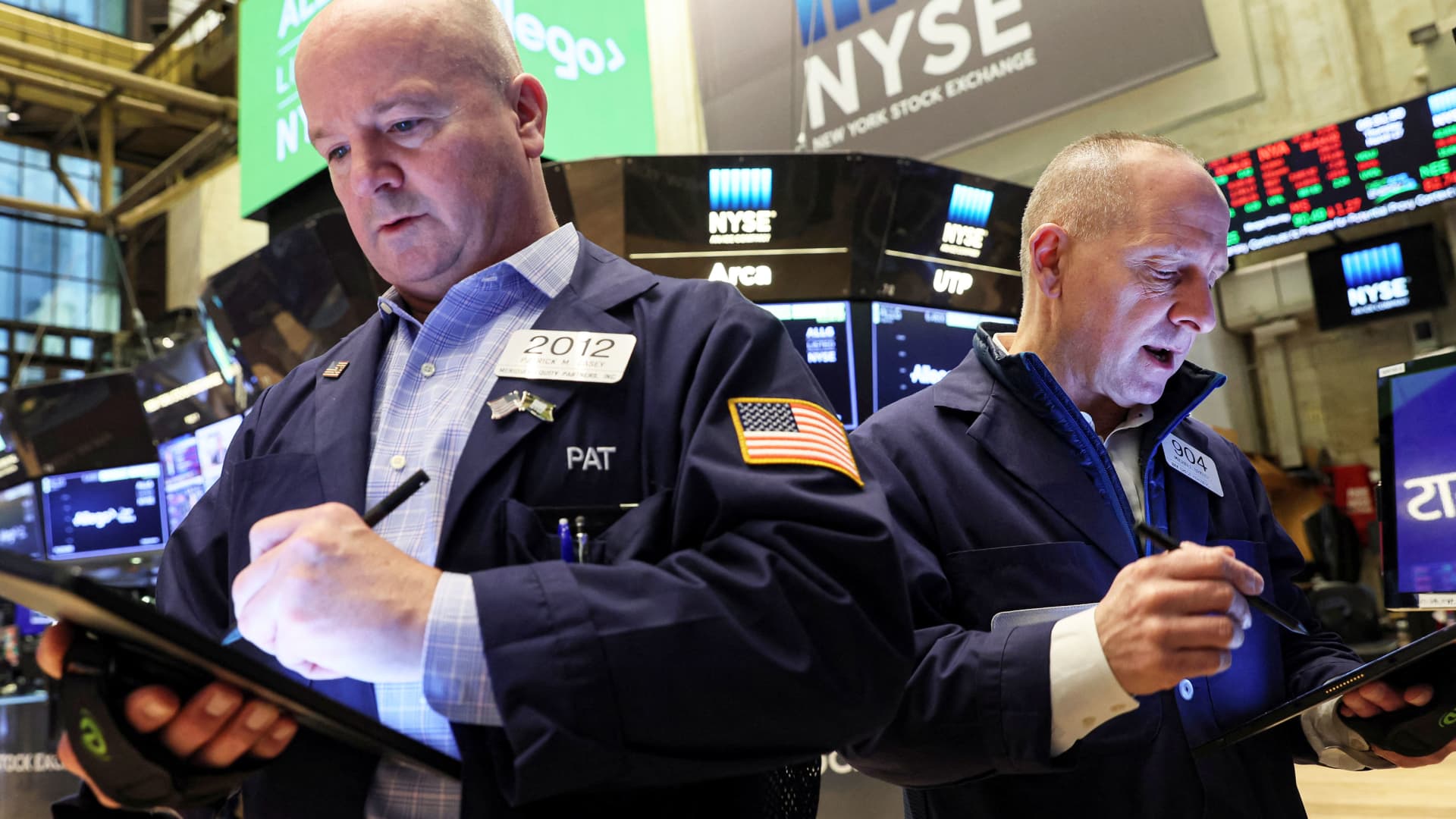Oil jumps to highest since 2011 as OPEC holds output steady despite Russia's war on Ukraine
Oil prices continued their march higher, rising to the highest since 2011amid shortage fears as Russia's war on Ukraine intensifies.

A trader works on the floor of the New York Stock Exchange (NYSE) in New York City, U.S., March 1, 2022.
Brendan McDermid | Reuters
U.S. oil climbed to the highest level in more than a decade in Wednesday trade, with global benchmark Brent topping $113 per barrel after OPEC and its oil-producing allies, which includes Russia, decided to hold production steady.
The group will increase output in April by 400,000 barrels per day above March's level, despite the blistering rally in oil that has pushed prices well above $100. Russia's war in Ukraine is prompting supply shortage fears in what was already a very tight market prior to the invasion.
West Texas Intermediate crude futures, the U.S. oil benchmark, jumped more than 8% to trade at $112.51 per barrel, the highest level since May 2011. During trading Tuesday the contract gained 8.03% to settle at $103.41 per barrel.
Global benchmark Brent crude rose 8.3% to $113.58 per barrel, the highest level since June 2014. During Tuesday's session, the contract rose 7.15% to settle at $104.97 per barrel.
"There's no respite. This is a dramatic moment for the market and the world and supplies," said John Kilduff, partner at Again Capital. "It's clear the world is going to have to stand up to Russia by foreclosing its oil exports," he added, noting it's oil that the market cannot afford to lose.
Both WTI and Brent surged above $100 last Thursday for the first time since 2014 after Russia invaded Ukraine, prompting supply fears.
"Crude prices can't stop going higher as a very tight oil market will likely see further risk to supplies as the War in Ukraine unfolds," said Ed Moya, senior market analyst with Oanda. "Brent crude could surge to the $120 level if the oil market starts to think it is likely that sanctions will be placed on Russian energy."
On Tuesday member states of the International Energy Agency announced plans to release 60 million barrels of oil reserves in an effort to alleviate the upward march in oil prices. As part of that, the U.S. will release 30 million barrels.
Stock picks and investing trends from CNBC Pro:
But the announcement did little to calm markets.
"We do not view this as sufficient relief," Goldman Sachs wrote in a note to clients following the announcement. "Demand destruction — through still higher prices — is now likely the only sufficient rebalancing mechanism, with supply elasticity no longer relevant in the face of such a potential large and immediate supply shock," the firm added.
Both WTI and Brent are now up more than 40% year to date as demand rebounds while supply remains constrained. Global producers have kept output in check, and OPEC and its oil-producing allies have been slowly returning barrels to the market after implementing an unprecedented supply cut of nearly 10 million barrels per day in April 2020.
Most recently, the group's been raising output by 400,000 barrels per day each month.
"We think the producer group will likely stay the course with the current easing schedule and avoid wading into the deepening security crisis involving the group co-chair Russia," RBC wrote in a note to clients ahead of the meeting.
The firm did note that there "could be a strategy shift in the coming weeks" should there be an actual physical supply disruption.
Russia is a key oil and gas producer and exporter — especially to Europe. So far the country's energy complex has not been targeted by sanctions directly. However, there are ripple effects from the financial sanctions levied against Russia that have made some foreign buyers reluctant to buy energy products from Russia.
Amrita Sen, founding partner and chief oil analyst at Energy Aspects, estimates that about 70% of Russian crude oil exports "can't be touched" right now thanks to the banking sanctions.
"The panic that we're seeing in the market right now at $110 oil, we're going to be going a lot higher. We're going to go to $150, even higher than that because the only solver right now in this market is demand destruction," she told CNBC's "Squawk Box" on Wednesday.
- CNBC's Eustance Huang and Patti Domm contributed reporting.

 Tfoso
Tfoso 
































